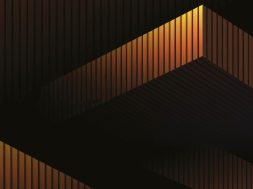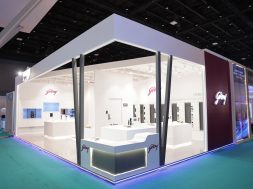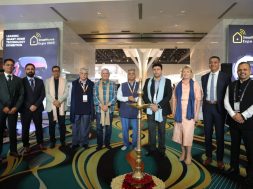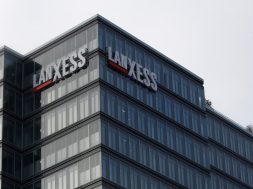Top-tier construction maintenance

In the first eight months of 2024, India has seen a troubling rise in building collapses. Incidents include a three-storey building in Navi Mumbai, a five-storey structure in Surat, an under-construction building in Kolkata, and several collapses in Delhi. These events highlight urgent concerns about construction safety and regulatory standards.
These incidents, often involving older structures, reveal the dangers of neglecting regular inspections and ignoring structural integrity. However, newer buildings have not been immune, with some collapsing due to poor-quality materials, inadequate engineering, and non-compliance with building codes. Urbanisation and population growth have increased construction activity, often compromising safety standards. Illegal construction, overloading, and unauthorised modifications weaken structures, making them prone to collapse, especially under natural stresses like heavy rainfall or seismic activity. Preventing such tragedies requires proactive maintenance, regular inspections, and strict safety regulations. Advanced technologies like Structural Health Monitoring (SHM) can detect issues early while educating builders and the public on quality materials and sound construction practices is vital.
In an online interaction organised by ACE Update Magazine, Rushabh Karnavat Founder & CEO Rushabh Surendra Karnavat advises best practices to avoid future mishaps; he states, “Preventing structural failures requires regular assessments, timely repairs, and the use of high-quality materials. It’s also crucial to manage loads effectively and consider seismic retrofitting and proper waterproofing, especially in earthquake-prone areas. While Structural Health Monitoring (SHM) provides valuable insights, we must focus on accurate data interpretation, cost-effective solutions, and regular calibration to make the most of it.” In addition, Rohit Garg, Co-Founding Principal at Design Consortia, puts forth his opinion from an architectural perspective, stating, “Preventive measures, such as coating buildings against water and preventing corrosion, are essential to maintaining their structural integrity over time. We develop external channels to divert water from the building in high-water areas to preserve the reinforcement in mountainous or coastal regions. Since we designers are the ones who talk to clients about these specifics initially, we must bring these preventive measures up in the design stage so that the final plan considers them.”
In parallel to this discussion, Alok Ranjan, Co-Founder and CEO of Tauran Advisors, said, “Preventing building and infrastructure collapses comes down to proactive maintenance, and technology plays a huge role in that. IoT devices can monitor structures in real-time and catch issues before they become serious. Machine learning lets us analyse this data to predict failures, while Digital Twin technology helps us understand how systems behave under stress. By using condition-based maintenance, we can allocate resources more efficiently based on the actual state of equipment. And with Predictive Maintenance as a Service (PMaaS), we have scalable solutions to manage all these activities effectively.” Dr. Surendra Manjrekar, CMD of Sunanda Speciality Coatings Pvt. Ltd remarked, “We’re in an era of rapid knowledge growth and complex challenges. Structural collapses in older or newer buildings highlight the need to embrace new technologies. Global collaborations, like those with the American Concrete Institute and ASTM, are expanding our understanding. It’s time to move beyond outdated thinking and fully adopt the innovations shaping our industry.”
He also highlights the primary cause of building collapses, noting, “When we dig into why structures fail, we often find that the problem lies with the iron rods that are crucial for a building’s strength. We need to protect these rods from corroding to avoid future mishaps. Corrosion causes the iron to expand, which exerts strain on the surrounding concrete, resulting in cracks. These flaws can weaken the entire structure, leaving it vulnerable to further deterioration and collapse. The transition from moderate rust to serious structural difficulties can happen quickly. Therefore, it’s critical to detect and fix these problems early.”
Structural assessment and solutions
Dr. Surendra explains, “Preventing corrosion means creating solid barriers between harmful substances like oxygen, chloride, and water and the materials we protect. While it’s a sound approach, in theory, making a perfect protective layer can be tricky, especially on large sites where even tiny defects can compromise the barrier. That’s where advanced solutions come in. For example, corrosion-inhibiting admixtures, refined since the 1940s, are crucial for maintaining structural integrity. These admixtures create a nano-molecular layer that protects iron rods.
Third-generation corrosion-inhibiting admixtures can prevent new corrosion at the junctions between old and treated steel when making repairs, especially on a large scale. This not only enhances the durability of the repairs but also ensures long-lasting effectiveness. Integrating advanced technology and knowledge is key to achieving reliable and lasting results.
Life cycle analysis (LCA) is key to maintaining sustainable infrastructure by assessing environmental impacts across a structure’s life span. Incorporating LCA in design and maintenance ensures long-term sustainability through reduced resource use, lower carbon footprints, and enhanced durability. Furthermore, Rushabh highlights that although regular and intermittent maintenance is essential to averting structural breakdowns, incorporating cutting-edge technologies can greatly enhance these initiatives. AI and machine learning in conjunction with structural health monitoring (SHM) will soon make SHM indispensable since AI can evaluate SHM data and recommend necessary fixes. Promising answers are provided by innovations like self-healing concrete and digital twin technology. While lifespan assessment tools and automobile maintenance techniques can help optimise repair tactics, smart materials can respond to environmental changes.
Design element
Architects can use various tactics during the design phase to ensure better upkeep and extend the life of a structure. Long-term sustainability necessitates integrating design and maintenance techniques from the beginning. Effective design includes elements that make maintenance easier, such as using durable materials like self-healing concrete and incorporating smart technology like IoT sensors and building management systems for real-time monitoring. Digital twin technology simulates and analyses building performance, optimising maintenance schedules and enhancing design decisions.
Rohit emphasises that designing with maintenance in mind is crucial for creating long-lasting infrastructure. By choosing durable materials, ensuring easy access for maintenance, and incorporating smart technologies, we can greatly extend a building’s lifespan and improve its resistance to wear and tear. Thoughtful design and proactive planning are essential for achieving structural integrity and sustainability.
Preventing building collapses requires proactive maintenance, adopting advanced technologies, and strict adherence to safety standards. By ensuring the use of high-quality materials and thorough inspections, we can significantly enhance structural integrity and safeguard public safety.
Cookie Consent
We use cookies to personalize your experience. By continuing to visit this website you agree to our Terms & Conditions, Privacy Policy and Cookie Policy.







